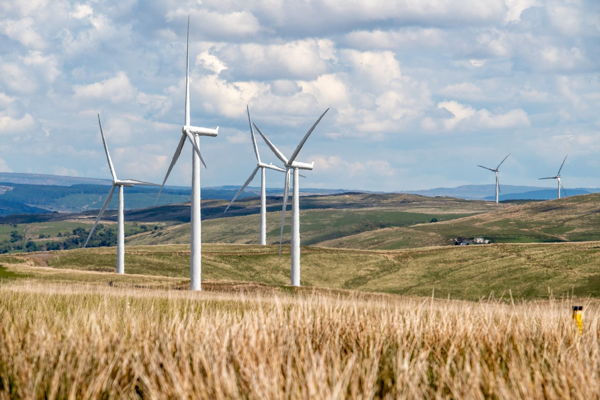2022-08-24 |
>
Power Generation Targets to Swallow Thousands of Acres
Projected growth of the two most significant onshore renewable energy technologies - wind and solar - to meet government targets will have land use requirements amounting to hundreds of thousands of acres.
In a recent submission to the House of Commons Business, Energy and Industrial Strategy (BEIS) Committee inquiry on decarbonising the power sector, the Central Association of Agricultural Valuers (CAAV) noted that recent government energy and emissions projections data suggest that total installed renewables capacity will be 70GW by 2040.
At 1.2 acres for each MW of wind - land taken to site turbines, foundations, transformers, tracks and other associated equipment, not the area enclosed by a wind farm - 4.3GW of wind would require 5,000 acres. For solar photovoltaics (PV), at 3.5 acres/MW, an additional 3.9GW of solar would require nearly 14,000 acres of land.
And it could go even higher. The five-fold increase in solar PV by 2035 suggested in the Energy Security Strategy implies an increment of 56GW, a combined annual growth rate of 13% and a further land take of nearly 200,000 acres. This might, though still be a more efficient use of land to produce power and with less effect on potential food production than biofuels.
“There is a significant gap between the historic rate of installation of renewables capacity and the rate implicit in the Energy Security Strategy,” says CAAV secretary and adviser Jeremy Moody. “The entire delivery mechanism requires an overhaul if the targets are to be reached, starting with a coherent government approach spanning policy, economic regulation, development consent and fiscal conditions.
“The current balance between food security, renewable electricity generation at least economic cost, carbon sequestration, making space for nature and preserving the landscape cannot be maintained.”
As well as power generation, distribution and transmission capacity are also likely to come under demand pressure, says Mr Moody. “There is already a backlog of existing connections and developers report being told they may have to wait up to ten years. As the economy transitions to a much greater reliance on electricity, the large projected increases in generation must be matched by a transformation of the transmission and distribution system.” Electric vehicles and heat pumps will just add to the pressure on rural power lines.
The Department for Business, Energy and Industrial Strategy (DBEIS) and the Energy Markets regulator (Ofgem) recognise the need to build more storage and encourage greater consumer flexibility. But this is to be based on the current energy market framework without the need to reform until the 2030s, says Mr Moody.
“First, while storage can improve electricity system flexibility and help manage peaks of supply and demand, it cannot substitute entirely for connections and increased transmission and distribution capacity.
“Second, it is hard to see that any market and regulatory arrangements alone would be able to deliver these changes. CAAV members report that getting a grid connection for generation projects is difficult and recommend landowners start work on a grid authorisation early so that they can get a place in the queue.”
Ambitious plans to scale up renewables and other low carbon generation need similarly ambitious and credible plans for the transmission and distribution systems to avoid dooming the enterprise to failure, he says.
About the CAAV
The Central Association of Agricultural Valuers (CAAV) is a specialist professional body representing, qualifying and briefing over 2,900 members practising in a diverse range of agricultural and rural work throughout England, Wales, Scotland and Northern Ireland.



